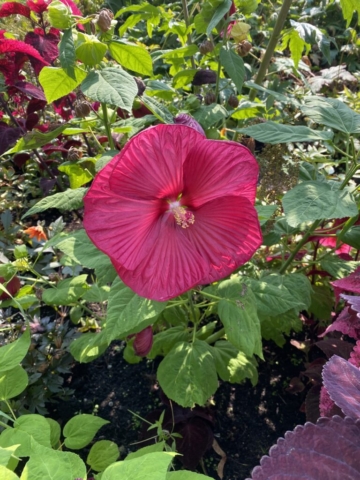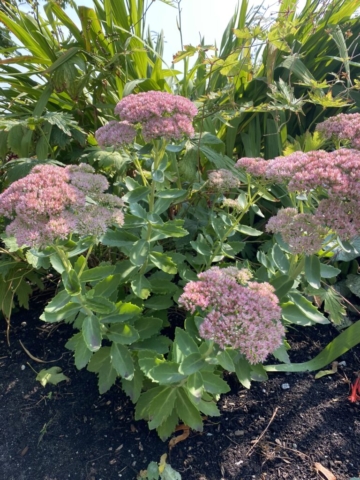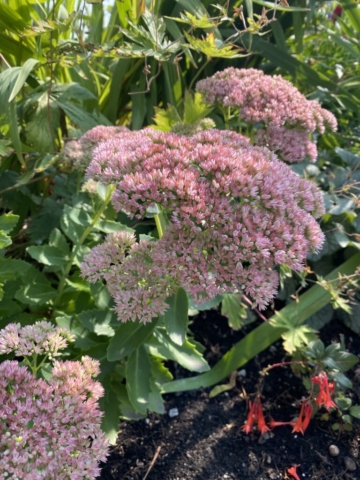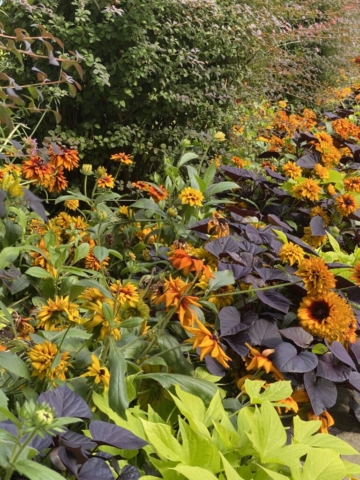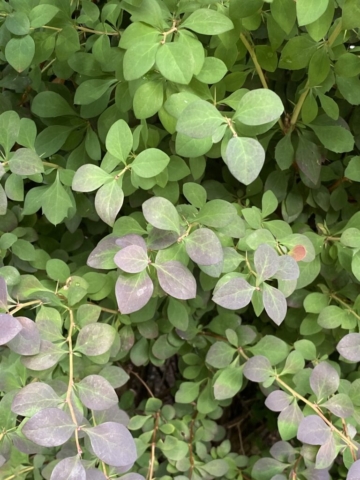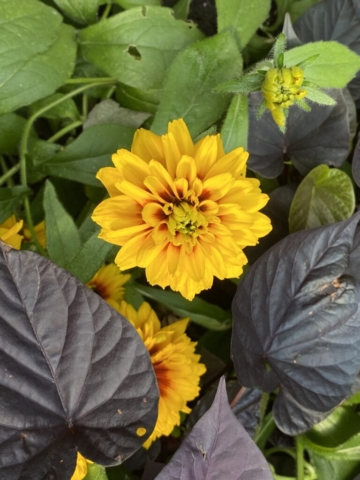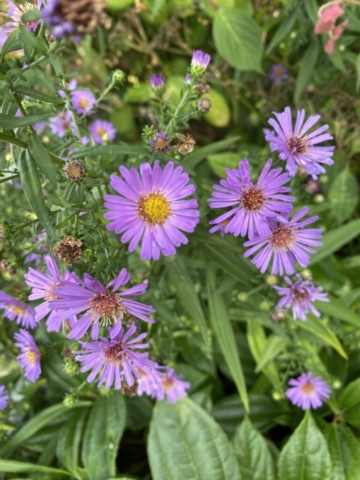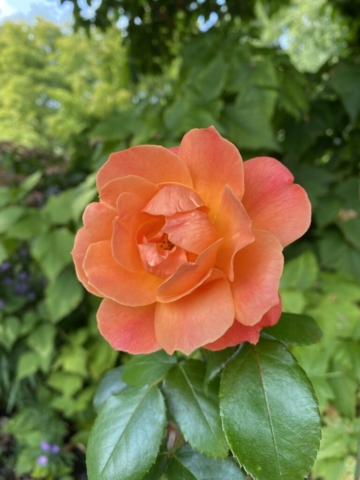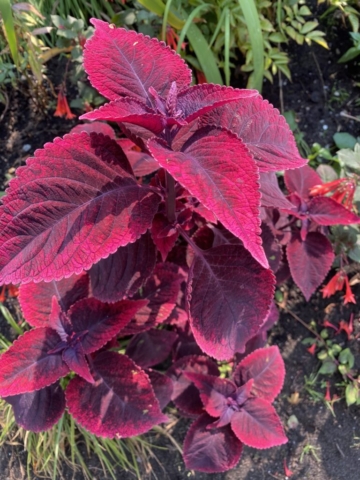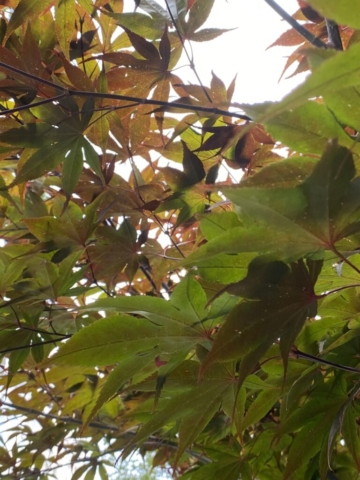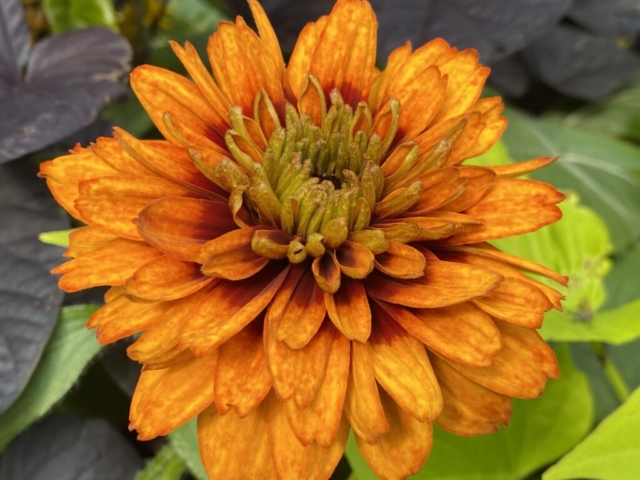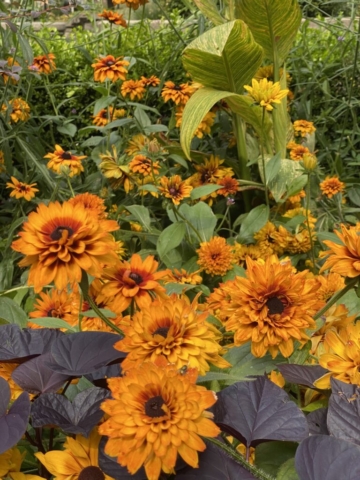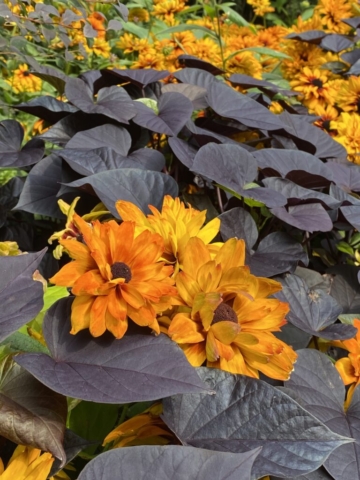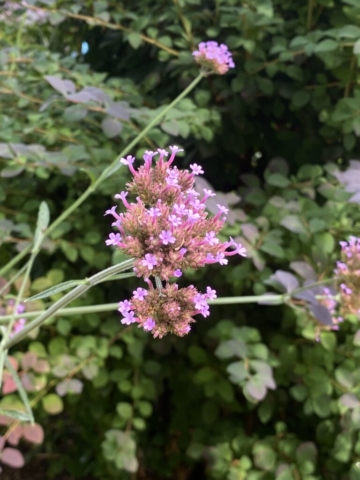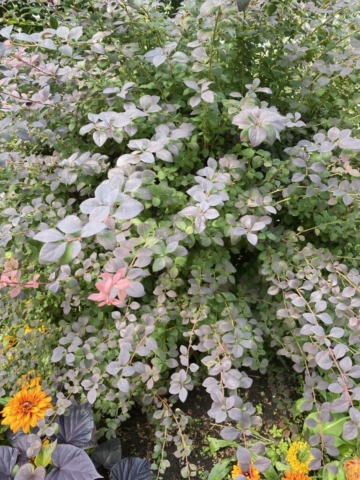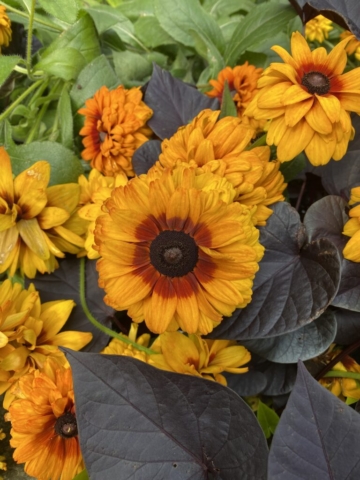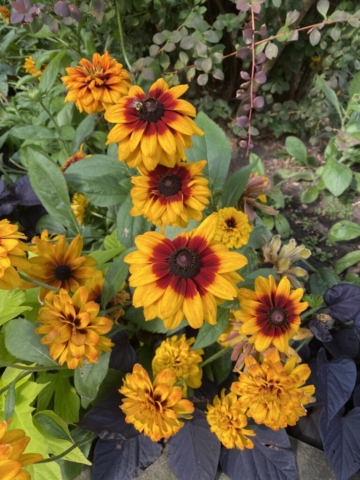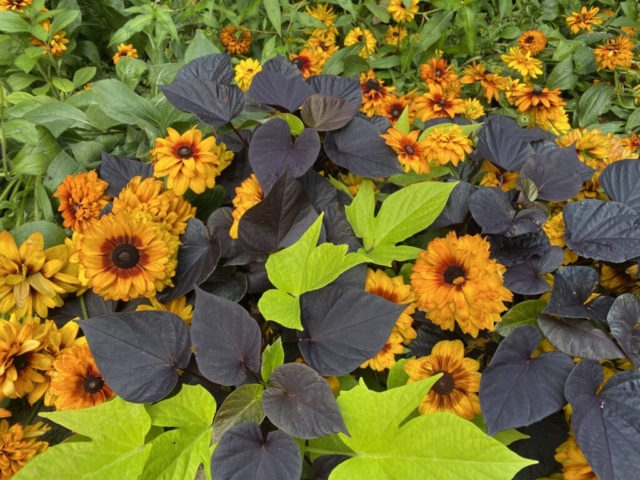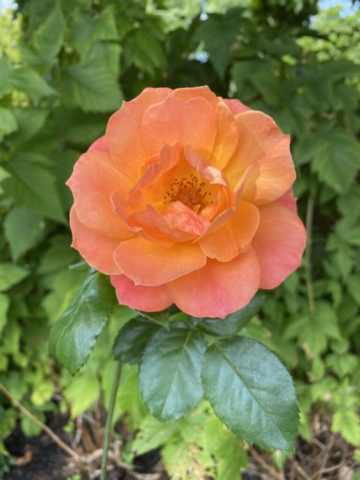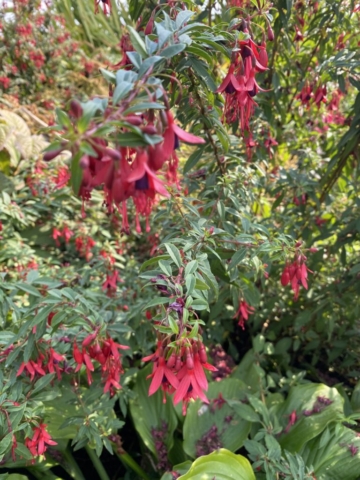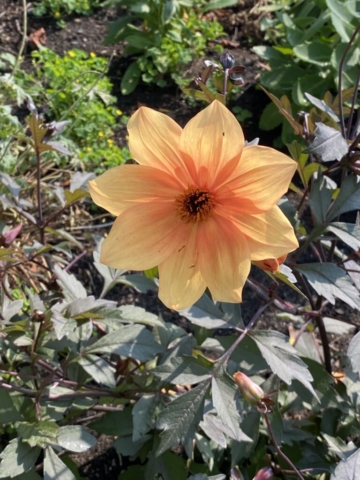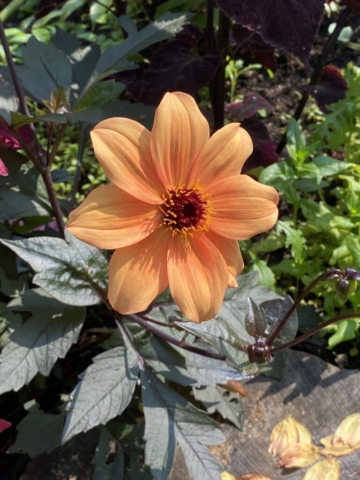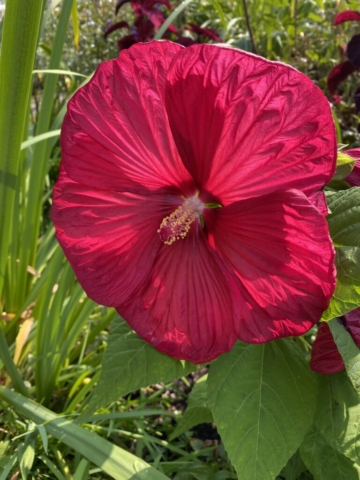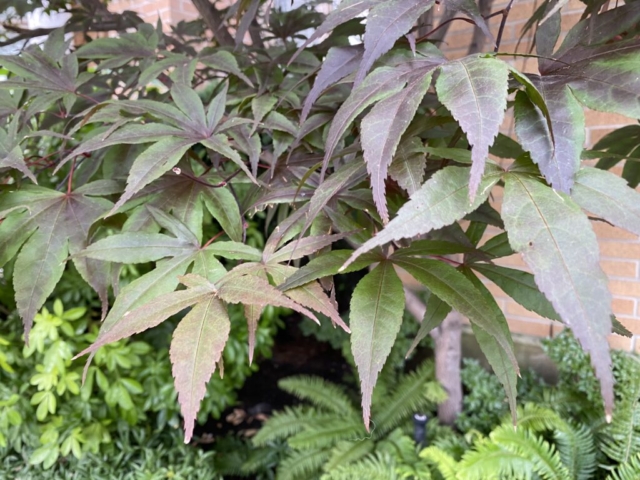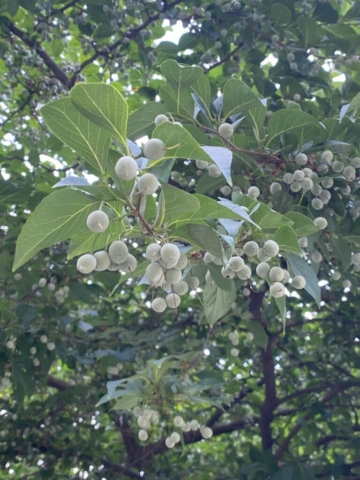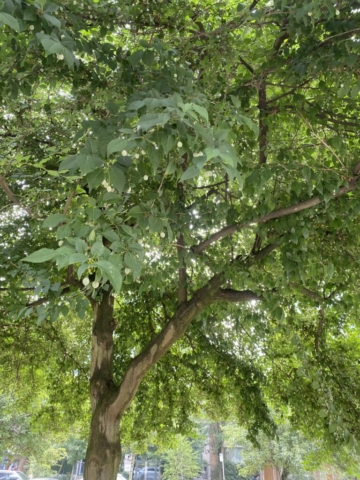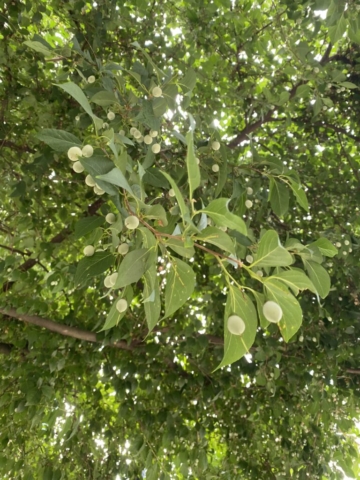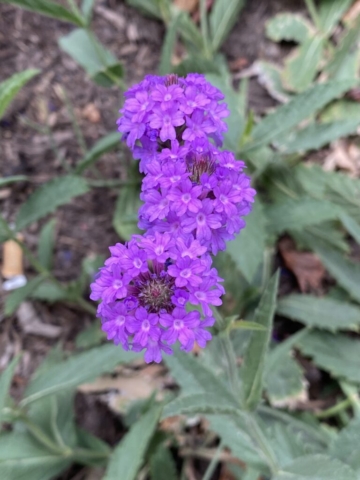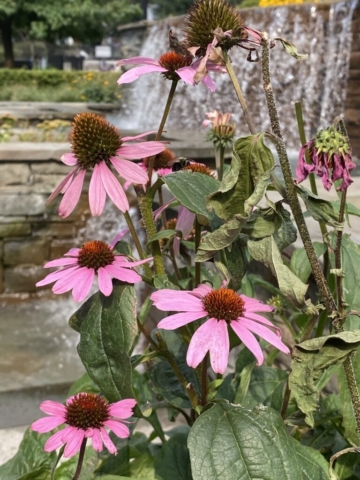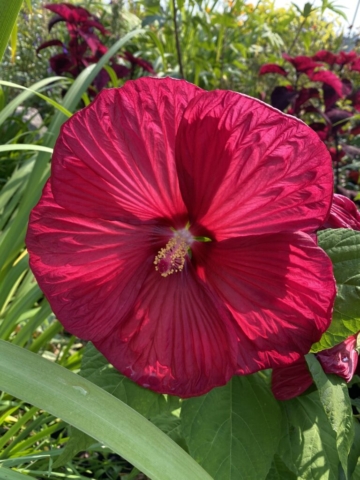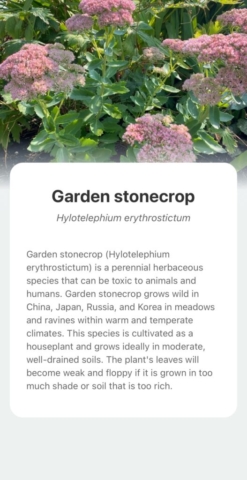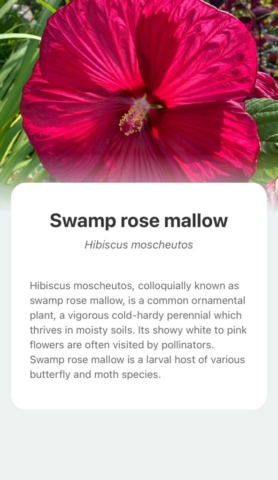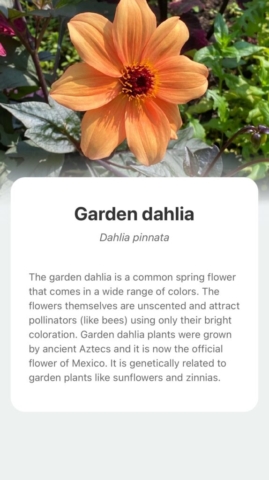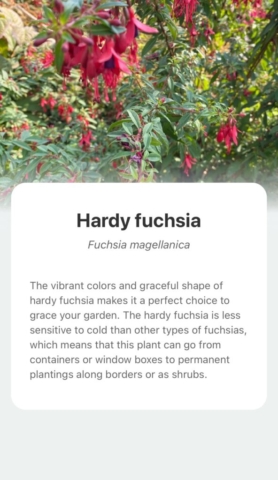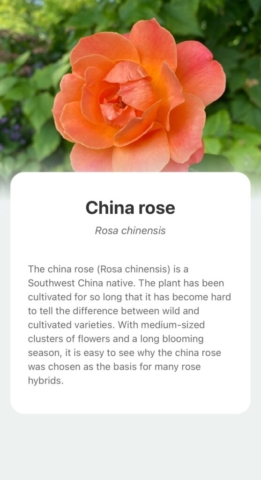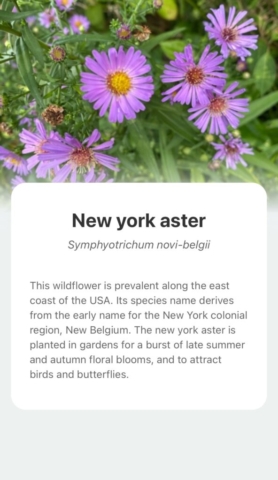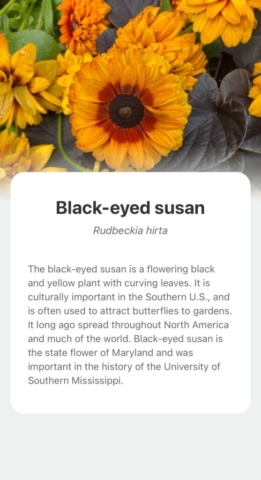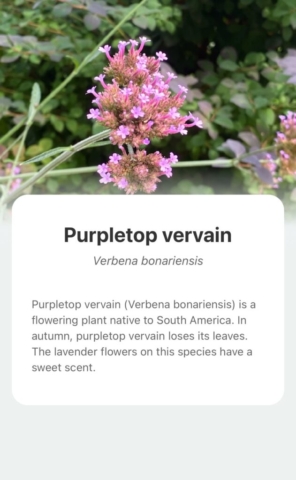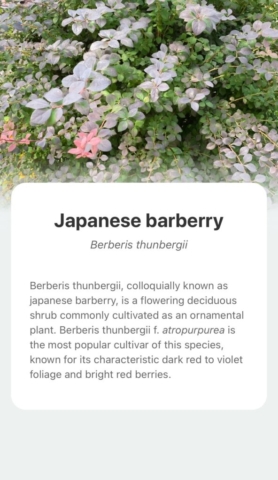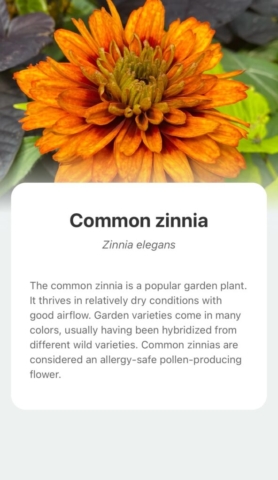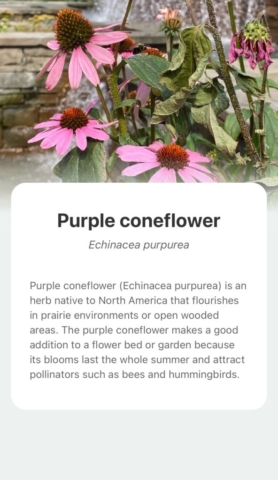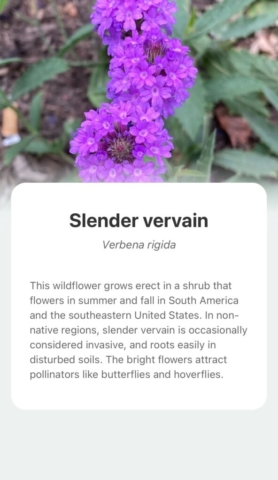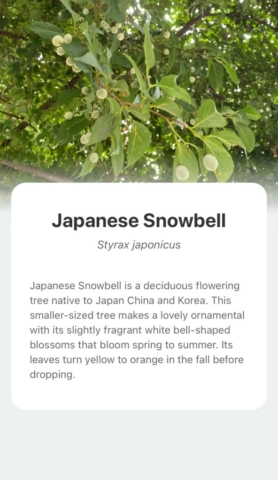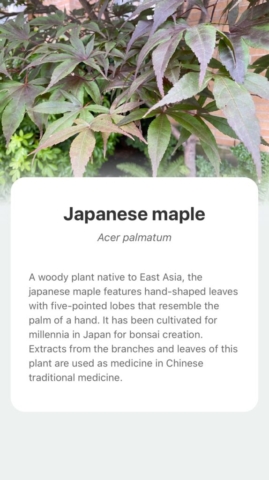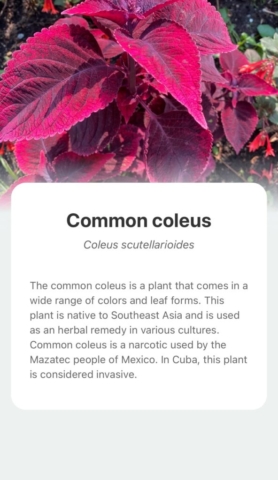September 14 blooms
Black-eyed susan
Black-eyed susan
Rudbeckia hirta
The black-eyed susan is a flowering black and yellow plant with curving leaves. It is culturally important in the Southern U.S., and is often used to attract butterflies to gardens. It long ago spread throughout North America and much of the world. Black-eyed susan is the state flower of Maryland and was important in the history of the University of Southern Mississippi.
Purpletop vervain
Verbena bonariensis
Purpletop vervain (Verbena bonariensis) is a flowering plant native to South America. In autumn, purpletop vervain loses its leaves. The lavender flowers on this species have a sweet scent.
Japanese barberry
Berberis thunbergii
Berberis thunbergii, colloquially known as japanese barberry, is a flowering deciduous shrub commonly cultivated as an ornamental plant. Berberis thunbergii f. atropurpurea is the most popular cultivar of this species, known for its characteristic dark red to violet foliage and bright red berries.
Common zinnia
Zinnia elegans
The common zinnia is a popular garden plant. It thrives in relatively dry conditions with good airflow. Garden varieties come in many colors, usually having been hybridized from different wild varieties. Common zinnias are considered an allergy-safe pollen-producing flower.
Purple coneflower
Echinacea purpurea
Purple coneflower (Echinacea purpurea) is an herb native to North America that flourishes in prairie environments or open wooded areas. The purple coneflower makes a good addition to a flower bed or garden because its blooms last the whole summer and attract pollinators such as bees and hummingbirds.
Slender vervain
Verbena rigida
This wildflower grows erect in a shrub that flowers in summer and fall in South America and the southeastern United States. In non-native regions, slender vervain is occasionally considered invasive, and roots easily in disturbed soils. The bright flowers attract pollinators like butterflies and hoverflies.
Japanese Snowbell
Styrax japonicus
Japanese Snowbell is a deciduous flowering tree native to Japan China and Korea. This smaller-sized tree makes a lovely ornamental with its slightly fragrant white bell-shaped blossoms that bloom spring to summer. Its leaves turn yellow to orange in the fall before dropping.
Japanese maple
Acer palmatum
A woody plant native to East Asia, the japanese maple features hand-shaped leaves with five-pointed lobes that resemble the palm of a hand. It has been cultivated for millennia in Japan for bonsai creation. Extracts from the branches and leaves of this plant are used as medicine in Chinese traditional medicine.
Common coleus
Coleus scutellarioides
The common coleus is a plant that comes in a wide range of colors and leaf forms. This plant is native to Southeast Asia and is used as an herbal remedy in various cultures. Common coleus is a narcotic used by the Mazatec people of Mexico. In Cuba, this plant is considered invasive.
Garden stonecrop
Hylotelephium erythrostictum
Garden stonecrop (Hylotelephium erythrostictum) is a perennial herbaceous species that can be toxic to animals and humans. Garden stonecrop grows wild in China, Japan, Russia, and Korea in meadows and ravines within warm and temperate climates. This species is cultivated as a houseplant and grows ideally in moderate, well-drained soils. The plant’s leaves will become weak and floppy if it is grown in too much shade or soil that is too rich.
Swamp rose mallow
Hibiscus moscheutos
Hibiscus moscheutos, colloquially known as swamp rose mallow, is a common ornamental plant, a vigorous cold-hardy perennial which thrives in moisty soils. Its showy white to pink flowers are often visited by pollinators. Swamp rose mallow is a larval host of various butterfly and moth species.
Garden dahlia
Dahlia pinnata
The garden dahlia is a common spring flower that comes in a wide range of colors. The flowers themselves are unscented and attract pollinators (like bees) using only their bright coloration. Garden dahlia plants were grown by ancient Aztecs and it is now the official flower of Mexico. It is genetically related to garden plants like sunflowers and zinnias.
Hardy fuchsia
Fuchsia magellanica
The vibrant colors and graceful shape of hardy fuchsia makes it a perfect choice to grace your garden. The hardy fuchsia is less sensitive to cold than other types of fuchsias, which means that this plant can go from containers or window boxes to permanent plantings along borders or as shrubs.
China rose
Rosa chinensis
The china rose (Rosa chinensis) is a Southwest China native. The plant has been cultivated for so long that it has become hard to tell the difference between wild and cultivated varieties. With medium-sized clusters of flowers and a long blooming season, it is easy to see why the china rose was chosen as the basis for many rose hybrids.
New york aster
Symphyotrichum novi-belgii
This wildflower is prevalent along the east coast of the USA. Its species name derives from the early name for the New York colonial region, New Belgium. The new york aster is planted in gardens for a burst of late summer and autumn floral blooms, and to attract birds and butterflies.
